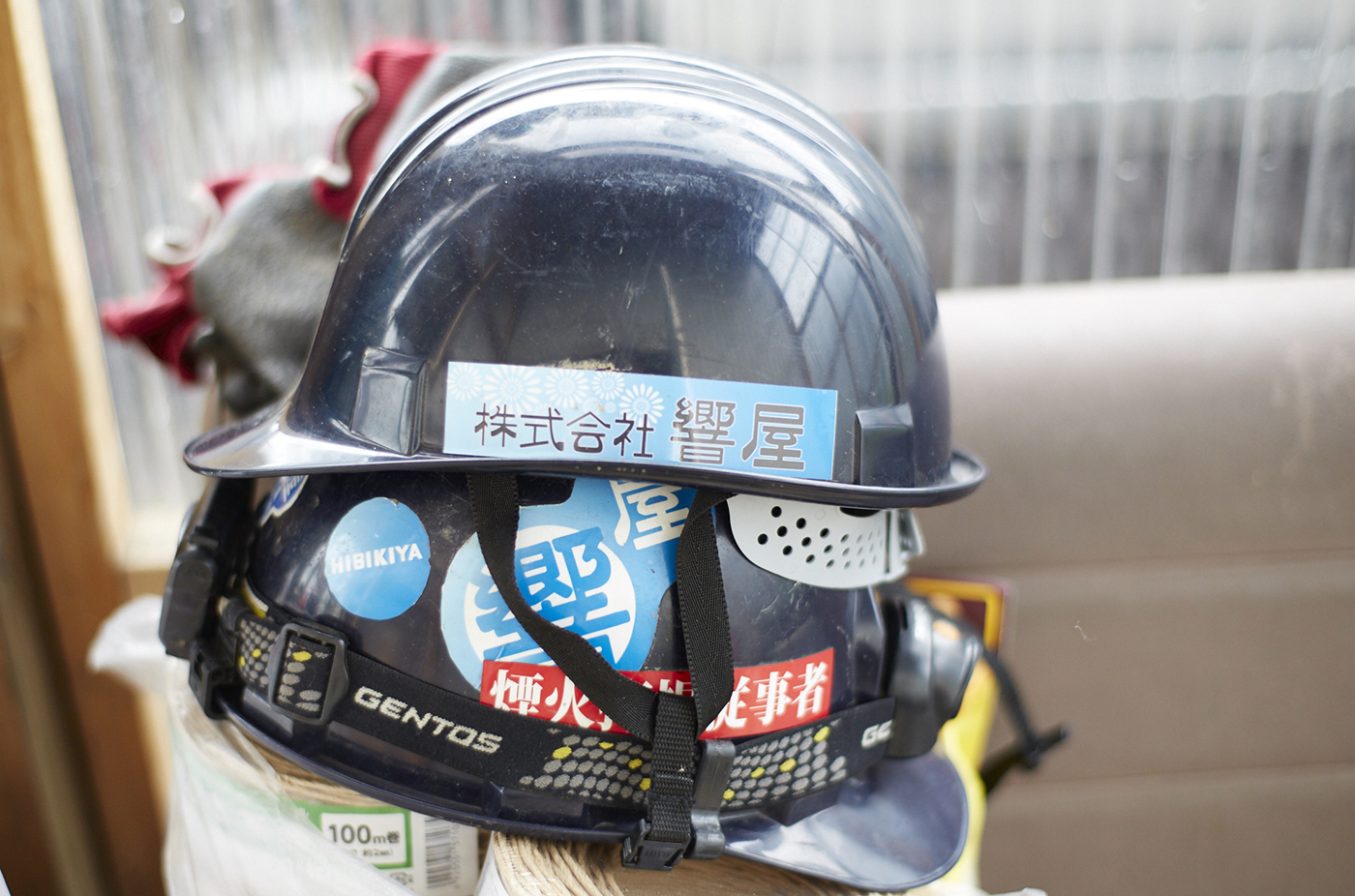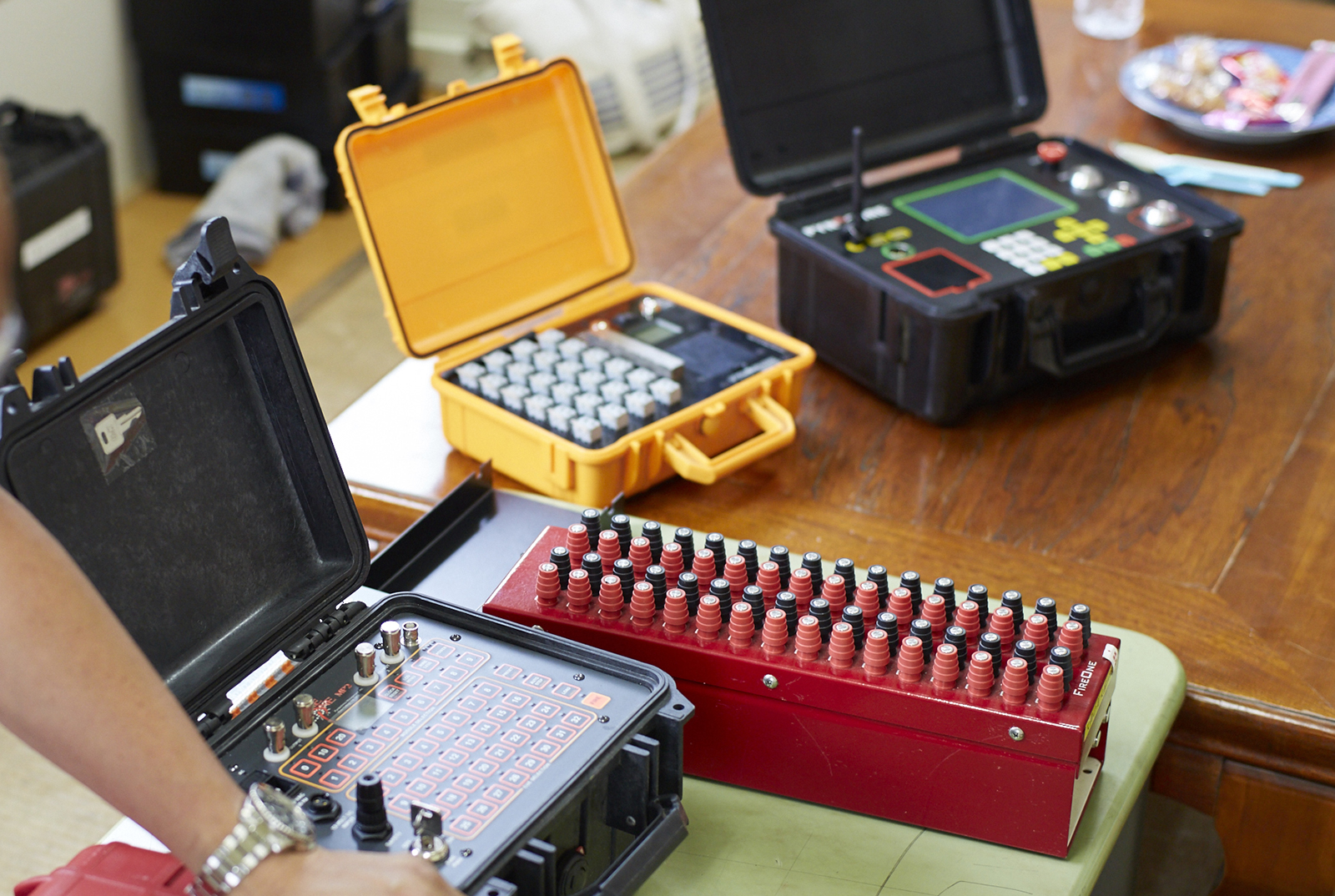
Written by Fumiko YABUKI
Editor; former designer. Born and raised in Akita, she is a hardcore Akita native! She is Deputy Chief Editor for the free magazine “non-biri”.
Photographs by Yōma FUNABASHI・Nozomi TAKAHASHI
Continuing on from last time, we’re at Hibikiya Co., Ltd. in Omagari, learning about how fireworks are made. Previously, we saw a firework being put together by hand, with detailed craftsmanship and techniques handed down from the olden days. The ignition and launch of one of these fireworks, however, uses the very latest and most up-to-date technology.
- Saito
- When we ignite the fireworks, we use a PC program to run a simulation.
- Yabuki
- Wow!
- Saito
- We get the music from the composer. And we’ll choreograph something like, “At this point in the music, two ‘5-go’ fireworks launch from two separate locations.” We can program the whole thing on the PC, and, for the shells we use, we can even make the display and bring the fireworks into the display using the program.
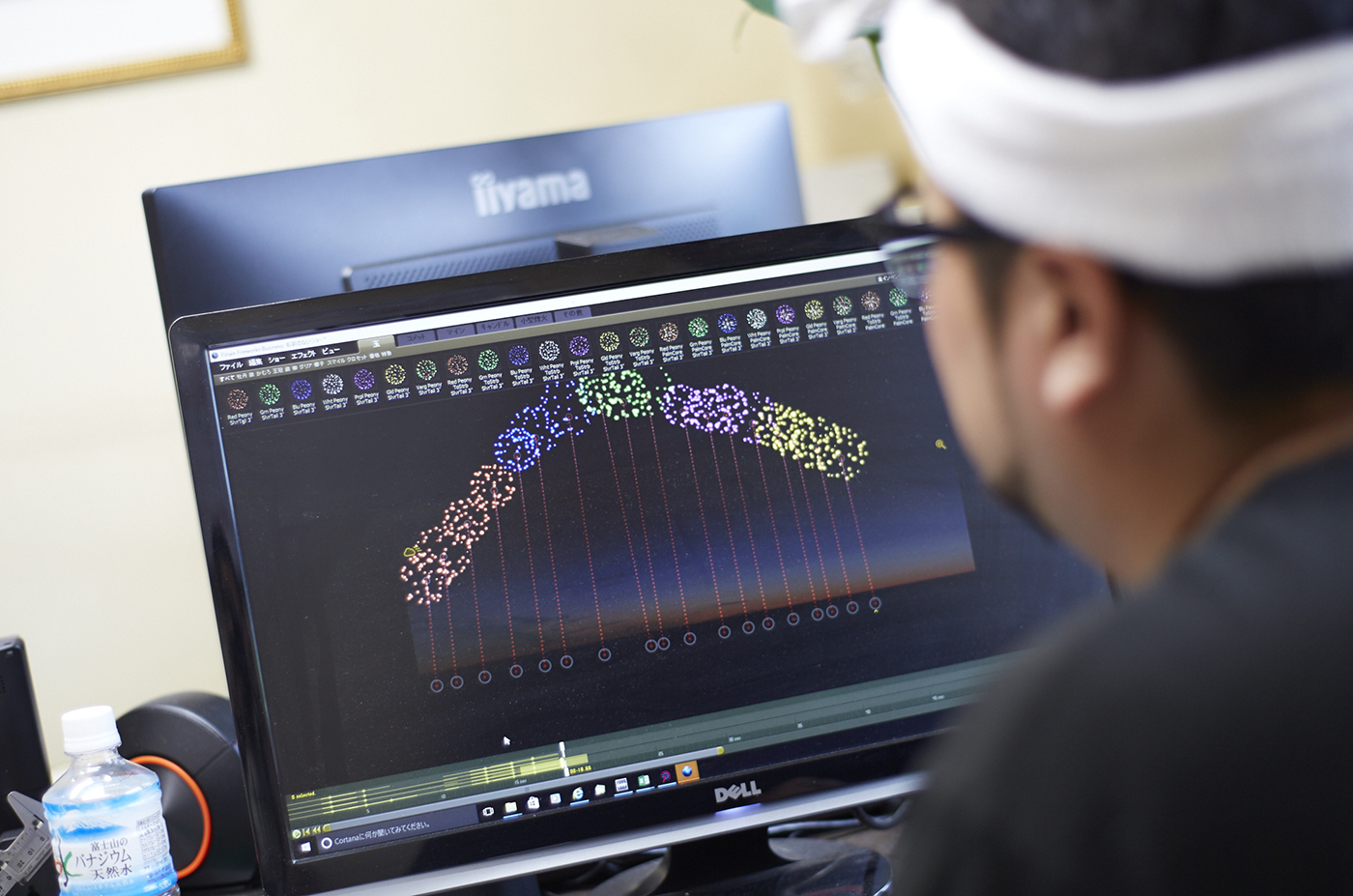
- Yabuki
- So cool! The software does all of this for you? This is amazing. I want to have a go at programming something myself.
- Saito
- We can set the timing to 1/100th of a second using this. By using this software, we can ensure everything goes off at exactly the same time.
- Yabuki
- So the staff can all see and share images of how the fireworks will look with this, right?
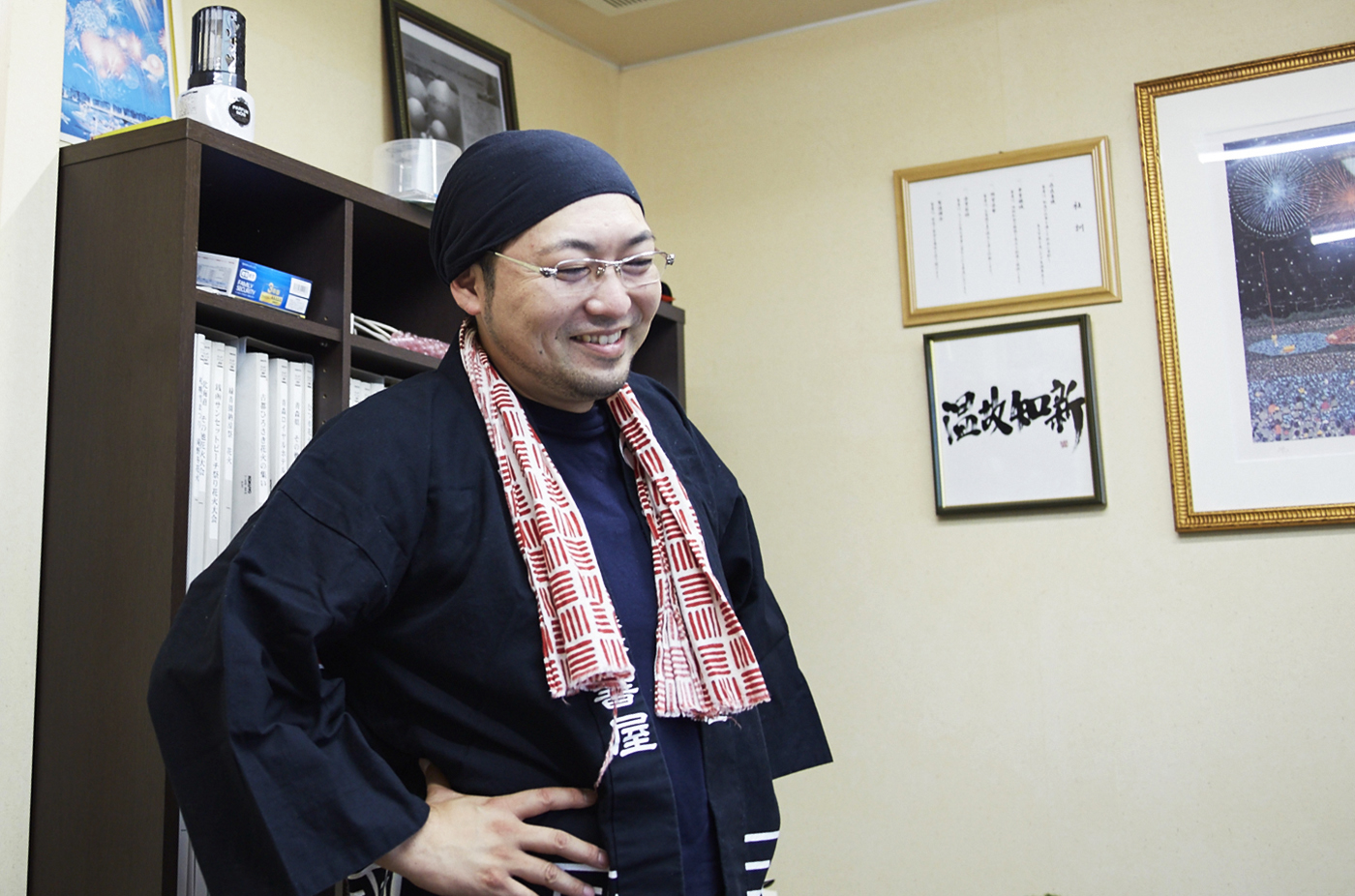
- Saito
- When you’re actually launching the fireworks on the day, the impression they make, the way they look varies depending on the weather conditions. So we use this to get a general feel of what the display will look like.
(To the room with the firing systems for firework displays)
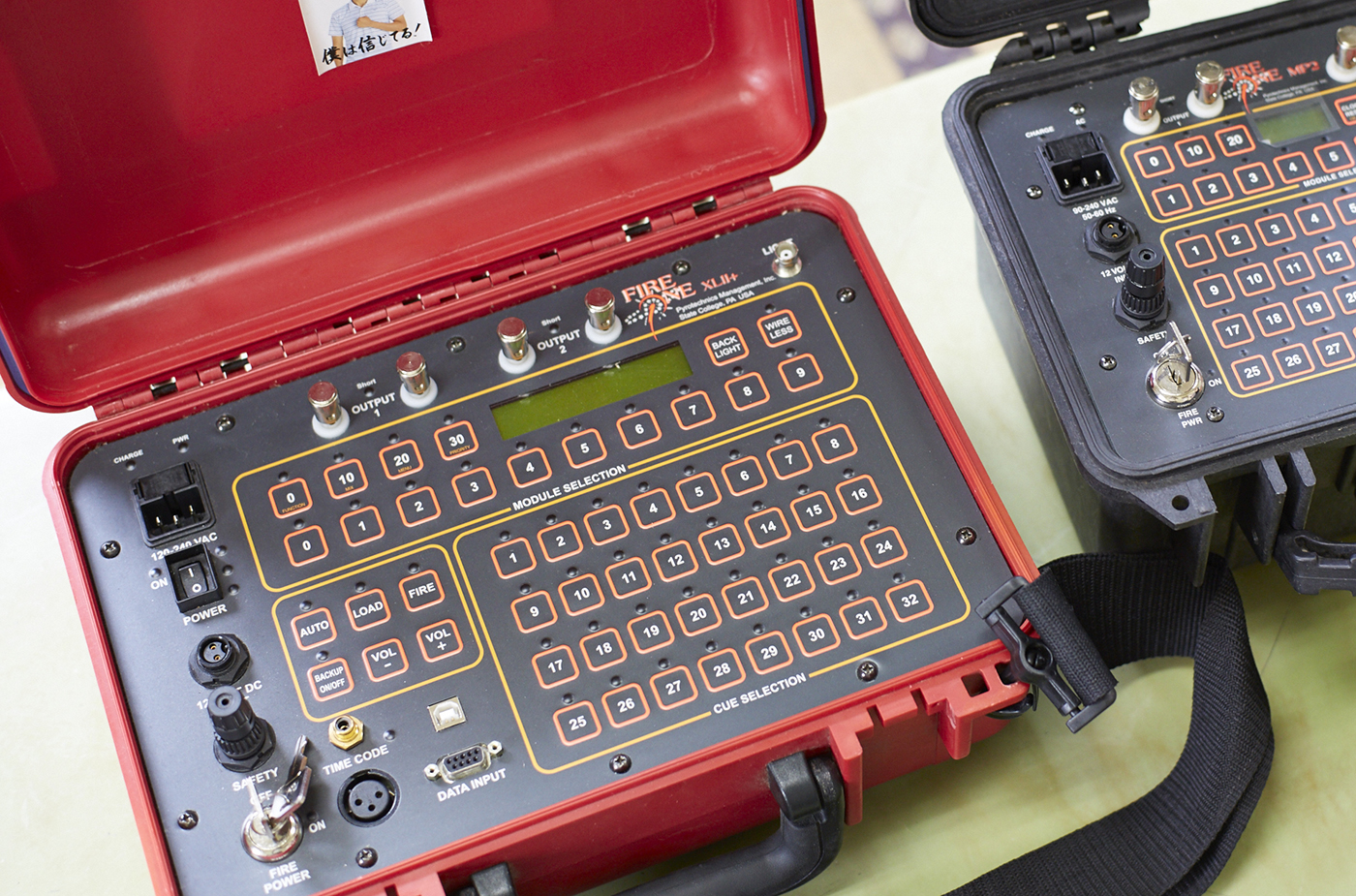
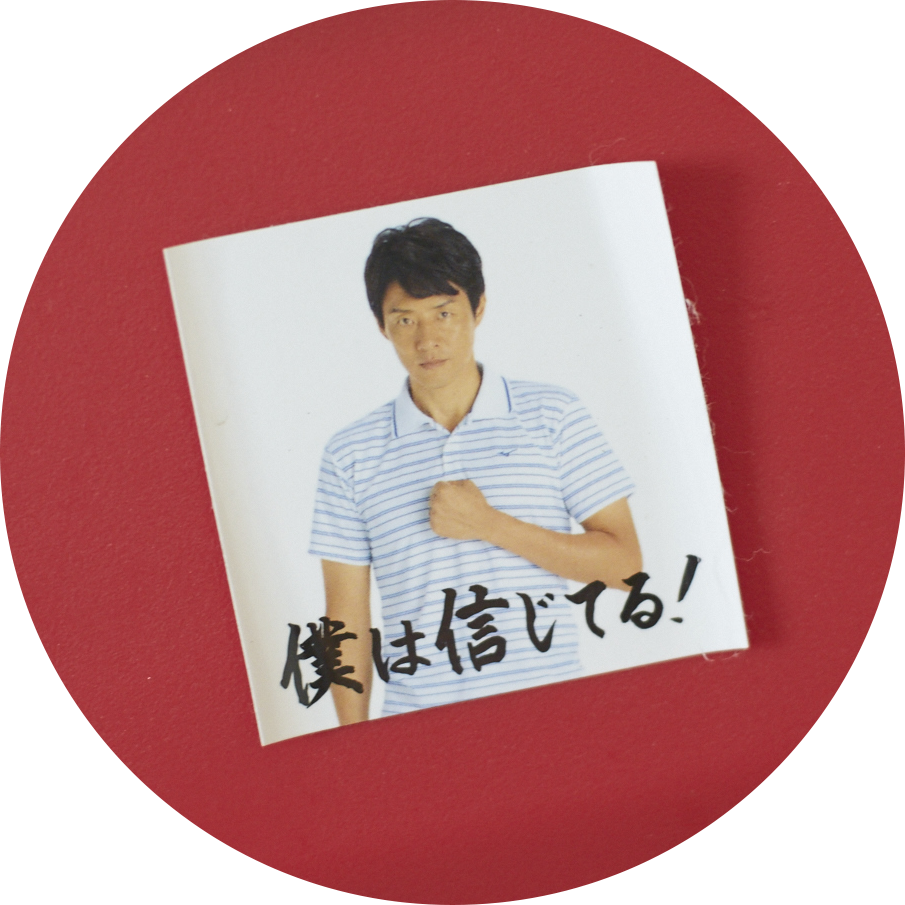
- Saito
- This is main firing device we use. It’s made in America. I’ve stuck this on to give me a confidence boost so I don’t get nervous.
[Points to picture of Shuzo Matsuoka (a famous Japanese tennis player/coach)]
- Yabuki
- Do you get butterflies when you’re launching a display?
- Saito
- You bet! This is a German device. We call it ‘Saburo.’ This one is ‘Ichiro’ and this is ‘Jiro’.
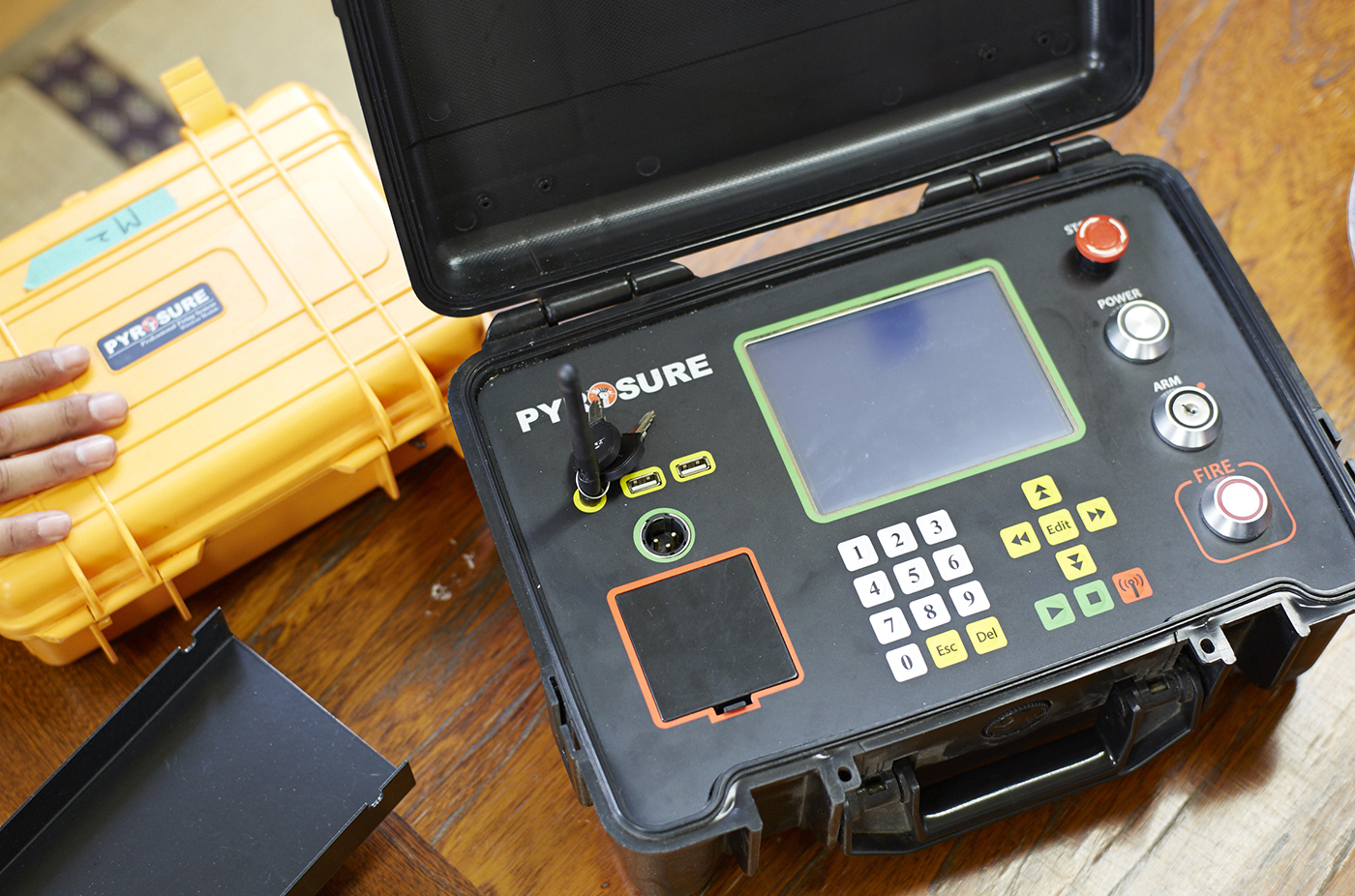
- Yabuki
- Ha ha! Each device has its own nickname!
- Saito
- This one is wireless. You can use it to reproduce the same sort of 1/100th of a second sequence that we did on the computer. If you plug in the program from before into this USB port, you can push the button to ignite the fireworks.
- Yabuki
- Amazing!
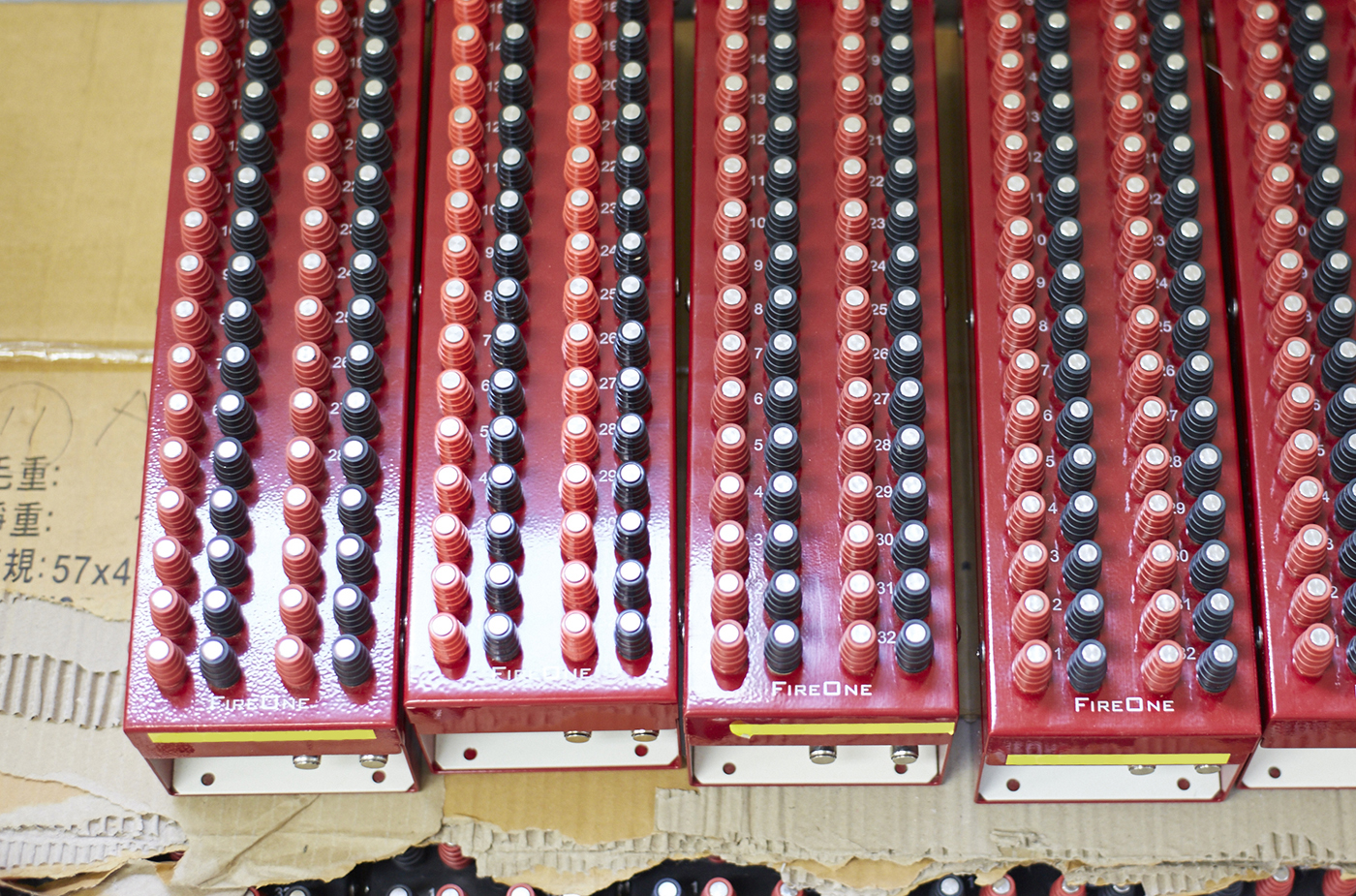
- Saito
- This is called a ‘module’. If I connect it to an ignition device and press the button to launch ‘Program 1’, the current flows and the fireworks are launched. This can fire 32 fireworks at once. At a large display, you might have thousands of fireworks being set off, so you’ll need dozens of these, possibly even hundreds.
- Yabuki
- I was still under the impression that you light a firework by holding a lit fuse to it and covering your ears!
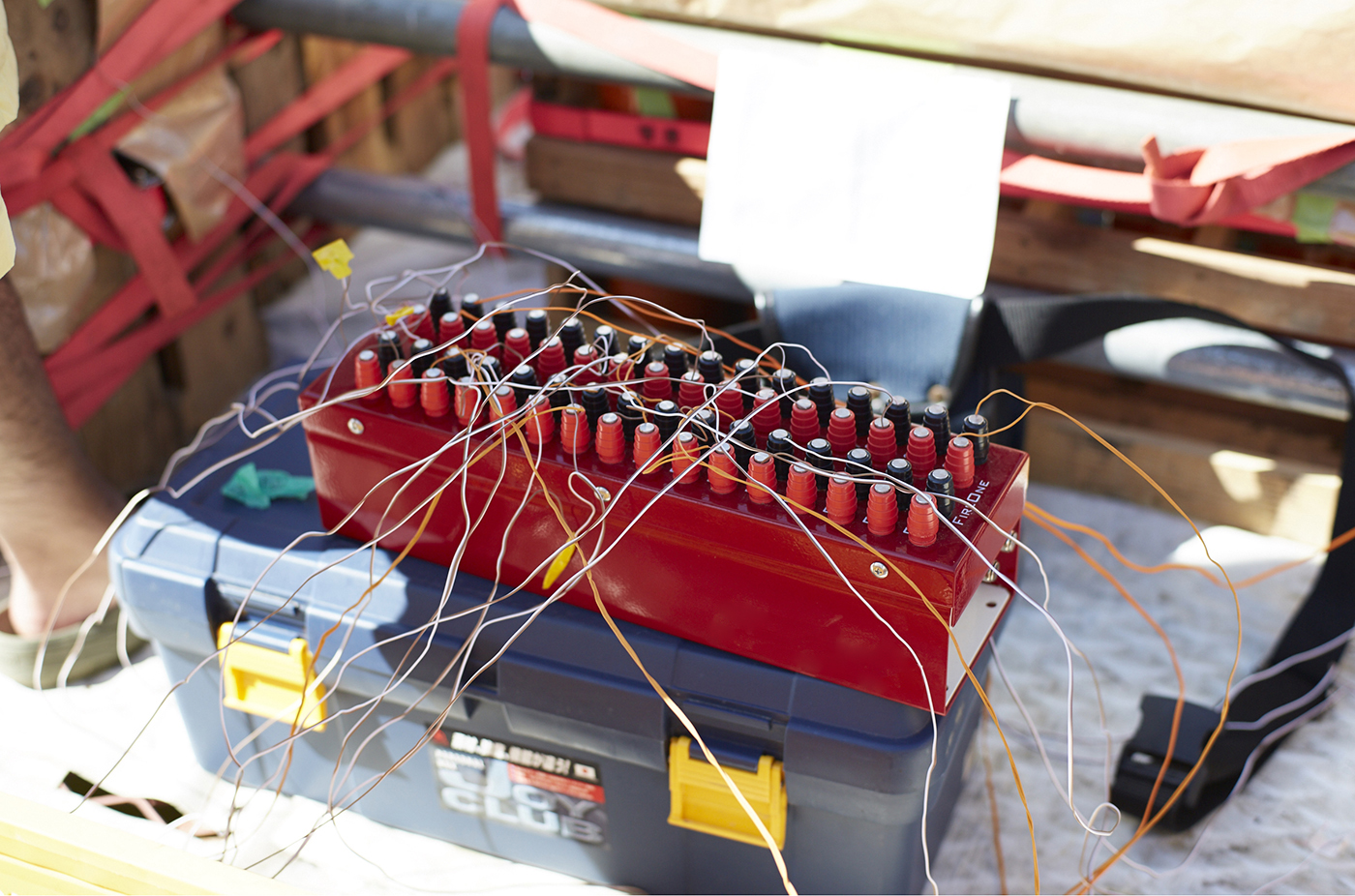
- Saito
- This kind of ignition device was originally developed for military use, you know. Because it’s wireless ignition, you can use it for bombs or missiles. From this point of view, it’s hard to tell whether we’re fireworks makers or technical engineers!
- Yabuki
- It must be tough to have to keep having to adapt to changes in technology.
- Saito
- Do you want to take a look at the launch tubes we use?
- Yabuki
- Sure!
- Saito
- These tubes are used for launching 60cm firework shells. We screw them together with bolts. The tube itself ends up being 4m long.
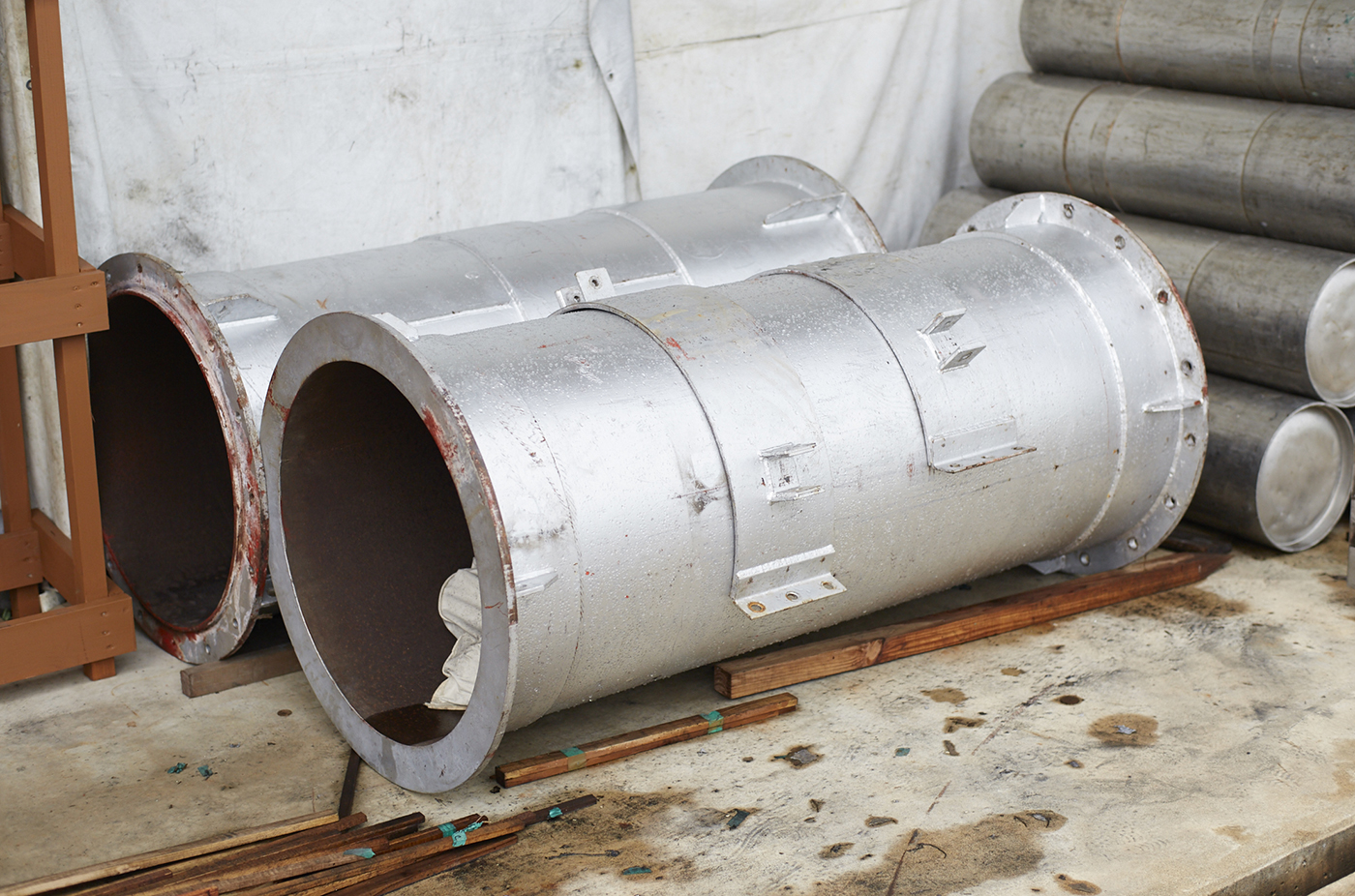
- Yabuki
- My goodness! It’s huge!
- Saito
- Even with firework tubes, you get more up-to-date designs released every year.
- Yabuki
- Are the new tubes any different from the older ones?
- Saito
- Absolutely! It’s all about the finer details. For instance, now we can launch fireworks ‘radially’.
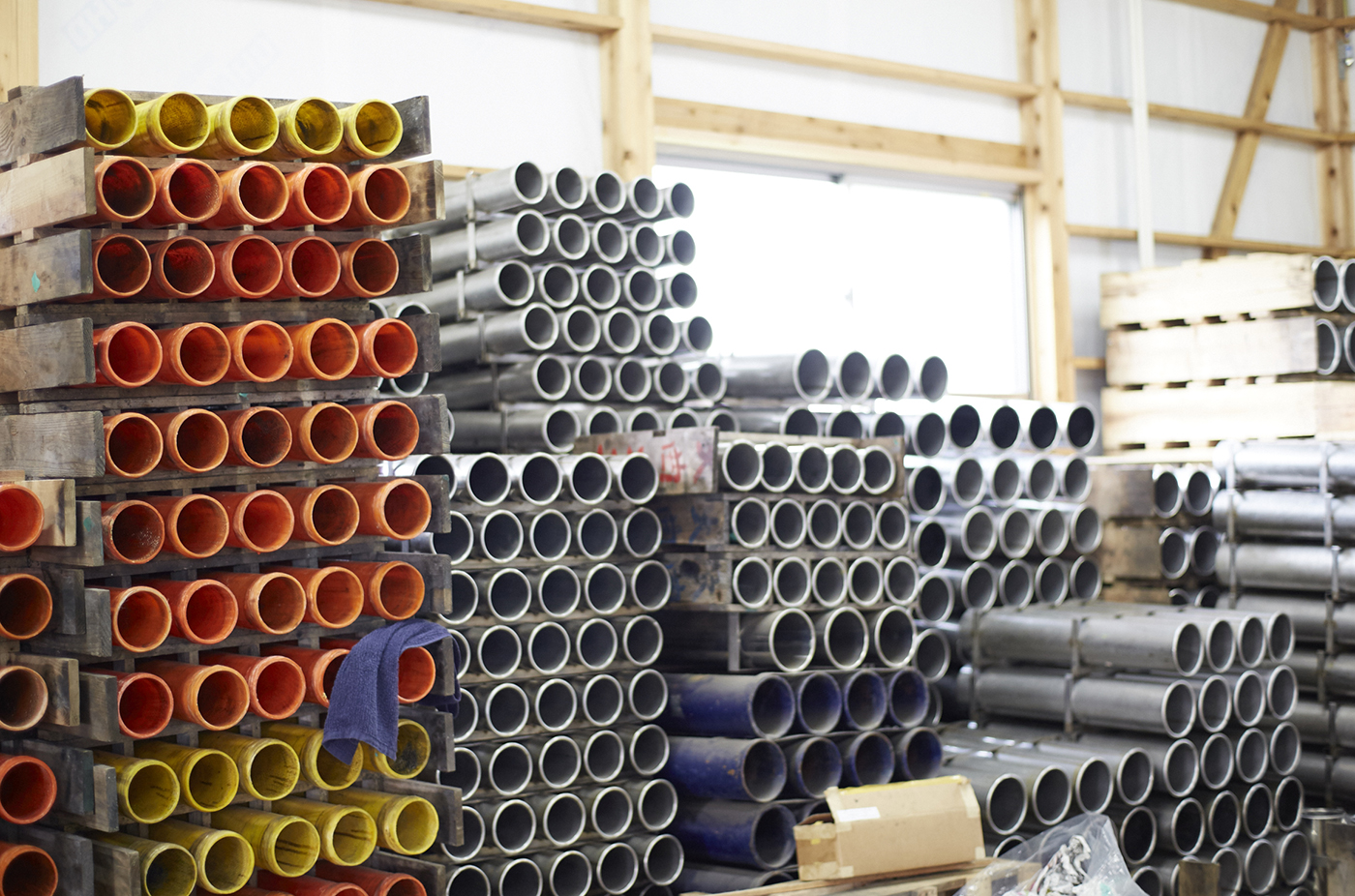
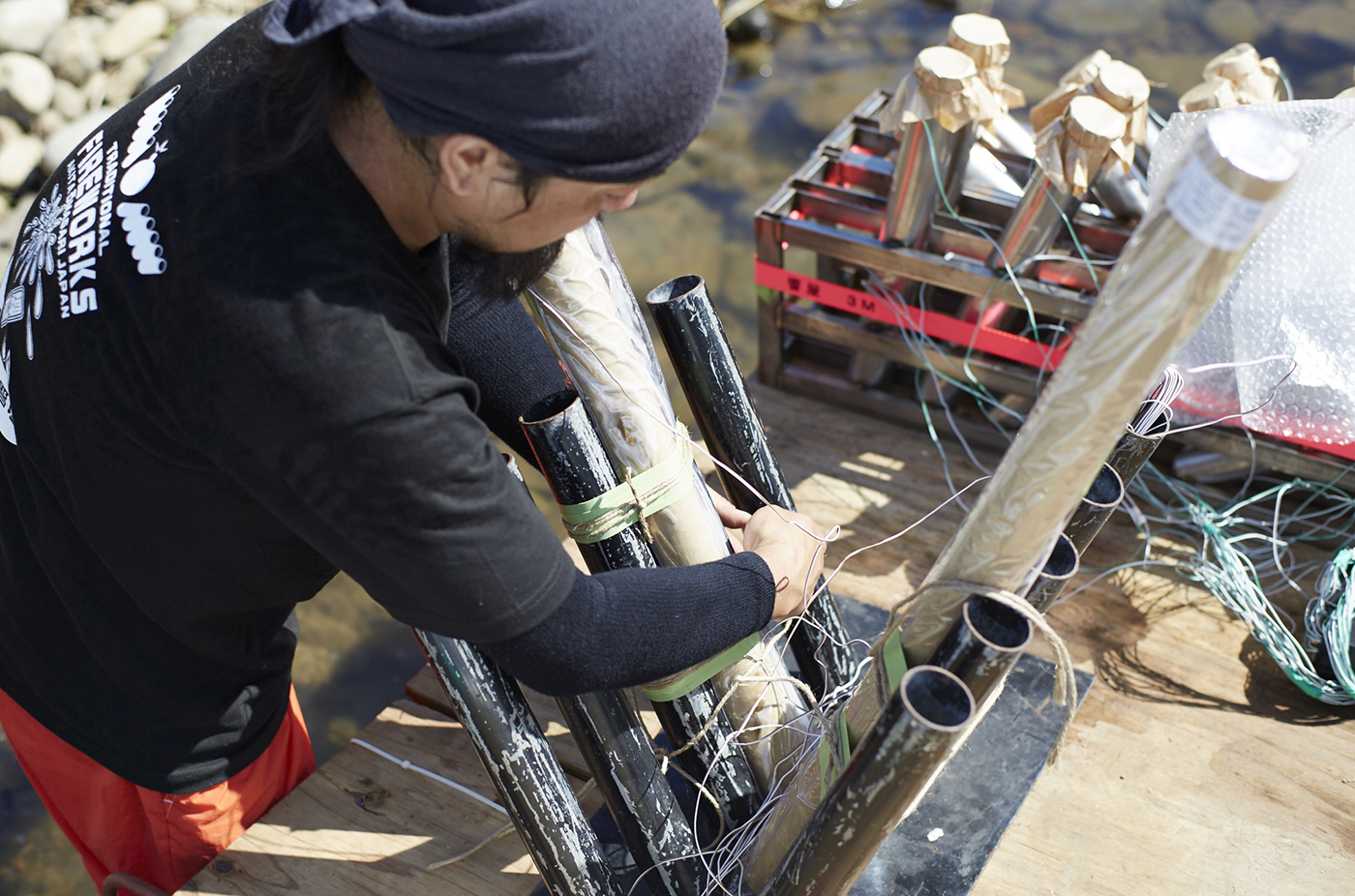
- Yabuki
- I suppose even just the slightest change in trajectory makes a difference to what a firework looks like. As technology evolves like this, you can take whatever image you might have in your mind of a firework and replicate it more and more accurately in an actual display, right?
- Saito
- That’s exactly it! In the old days with fireworks displays, you might just have had to worry about territorial disputes or issues with marking out where you were going to have your display. Now doing a display is like putting on a presentation, with props and business planning. If we get a job, we start with the music and the editing, then we work out the details – where we position the fireworks, how we fire them and so on…
- Yabuki
- I guess there’s a lot of deskwork involved, as well as ‘heavy lifting’ on-site. From fine details to full-on effort … I have to say it sounds pretty tough. We’re now in peak fireworks season, aren’t we? How are you finding it?
- Saito
- It’s a bit of a nightmare to be honest! At my age, a year goes by very quickly! It feels like January 1st was only yesterday!
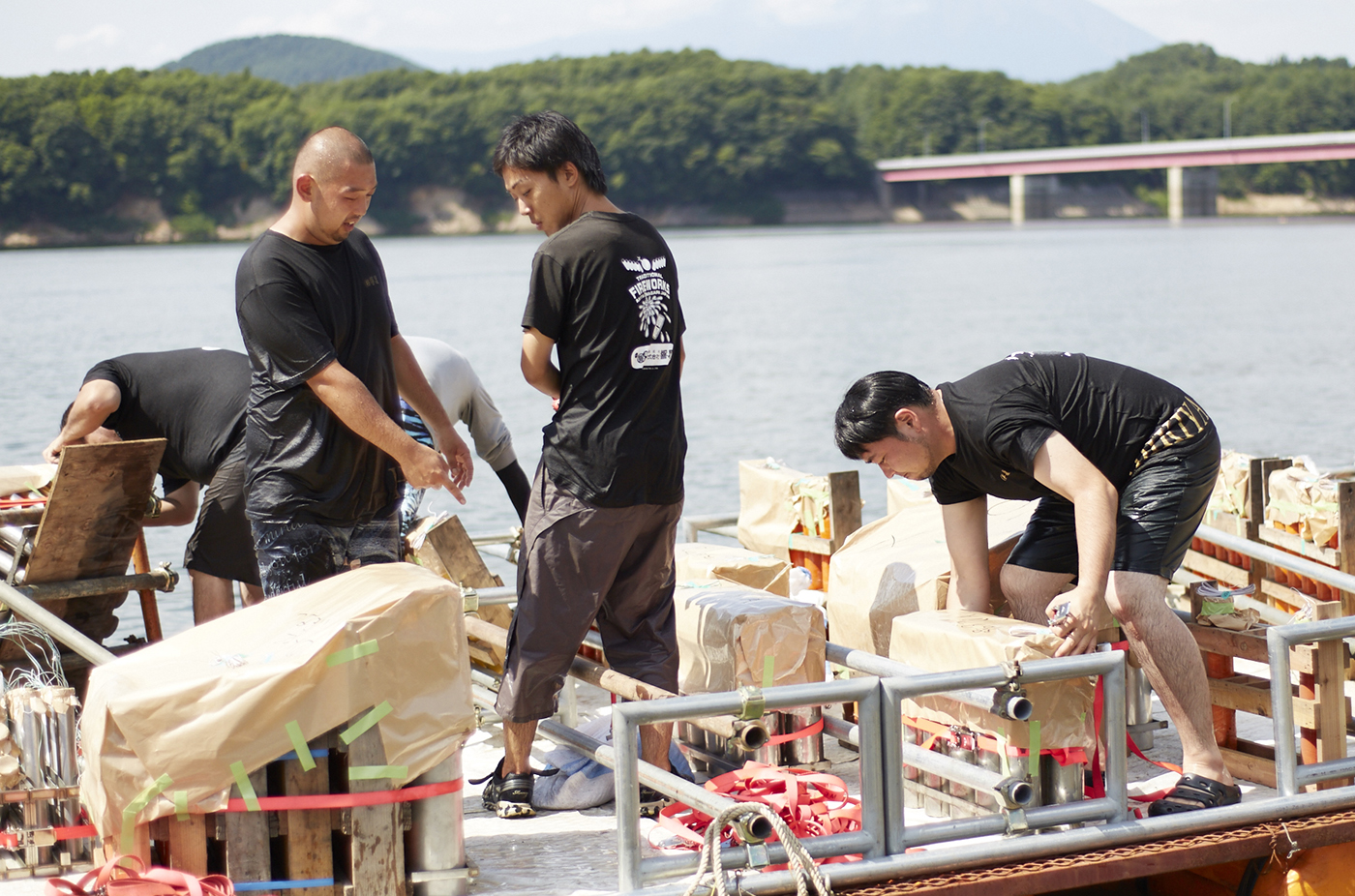
- Yabuki
- Do you get any rest at all during the summer?
- Saito
- Nope. I don’t sleep at all!
- Yabuki
- I bet you have to travel a lot as well. When you travel to firework displays, how far do you go?
- Saito
- I go all over Akita, or to Iwate, Aomori, Hokkaido…. In Hokkaido I go to Otaru, Yubari, Abashiri … and so on and so on.
- Yabuki
- How many staff do you have working here?
- Saito
- The maximum number we have at any one time is 22.
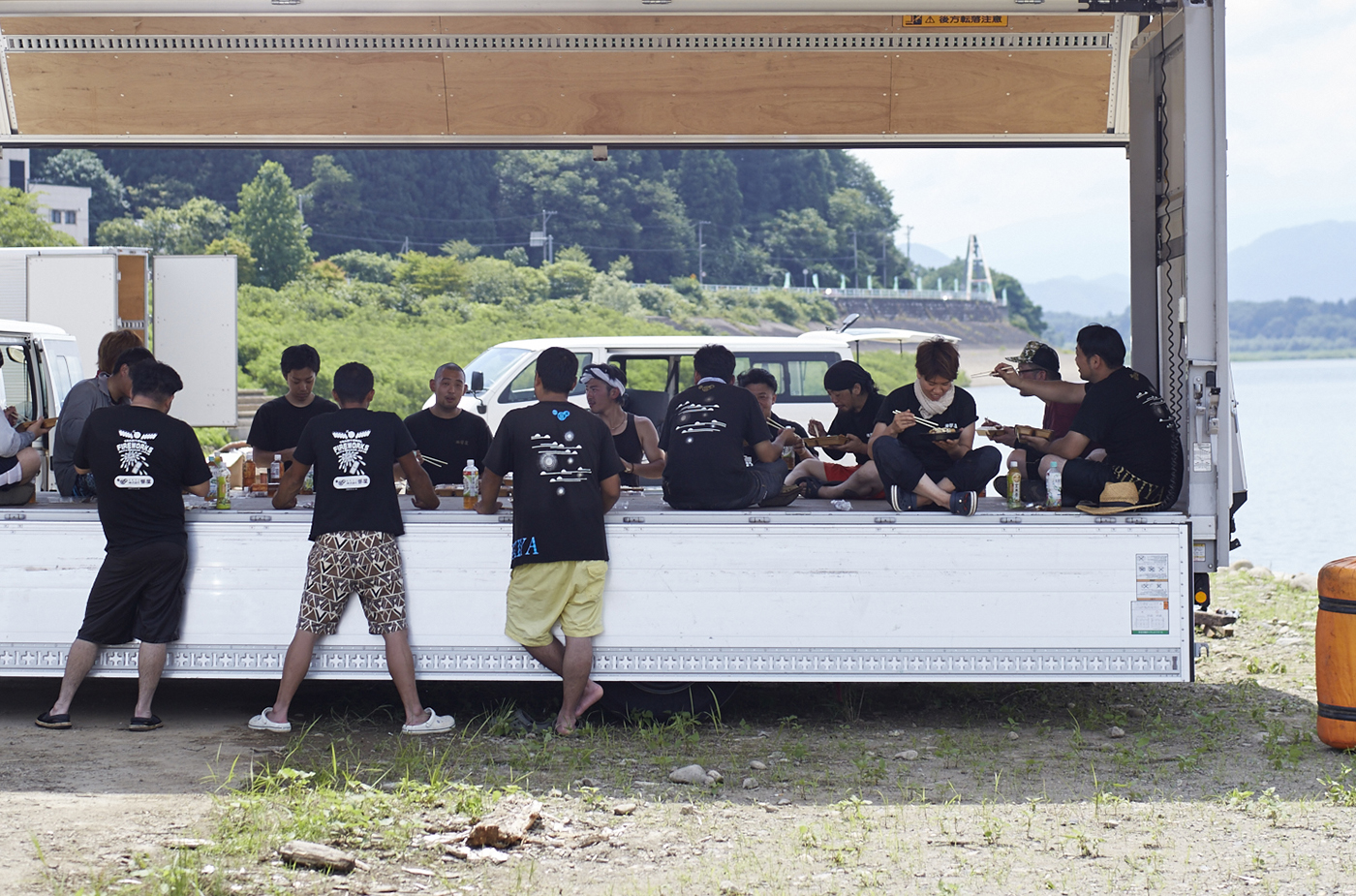
- Yabuki
- When you travel, you must be quite pumped up when you get back to your hotel at night!
- Saito
- Not really. I leave here at four in the morning. I actually come back at the end of the display, so I’m back here around 2 o’clock. Then by the time I finish clearing up, it’s already 4 o’clock in the morning again. That’s not unusual for me, you know.
- Yabuki
- You mean you don’t stay over?!
- Saito
- No, I don’t stay over. This is a round the clock job, 24 hours a day!
- Yabuki
- Oh no!
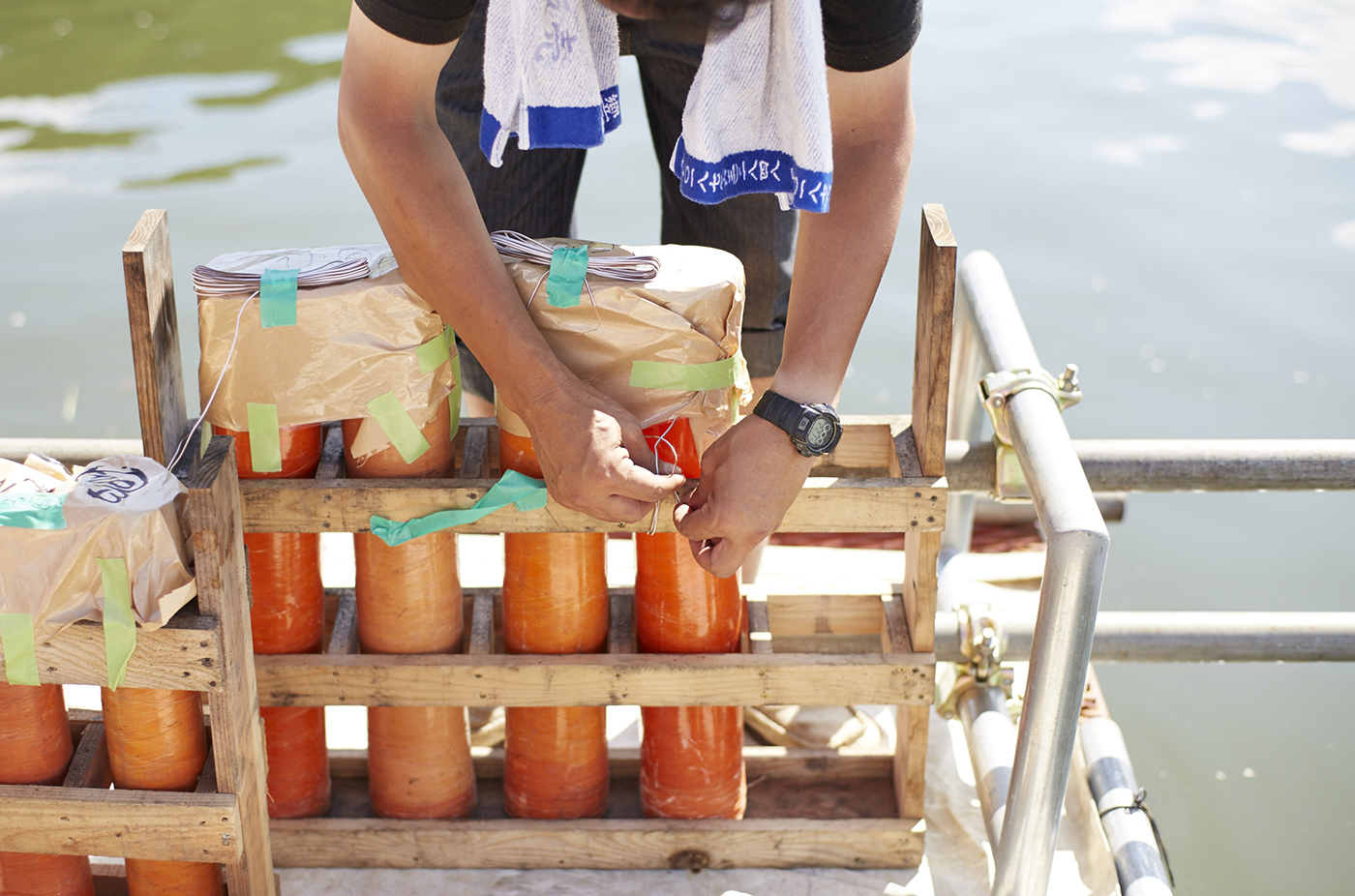
- Saito
- Having said that, if I’m in Hokkaido or Oma in Aomori, or somewhere outside Tohoku, then I’ll stay over. The Oma festival is on August 14th during Obon. It takes 8 hours each way, so I’m leaving on the 13th.
- Yabuki
- In that case, you won’t get any free time over Obon, will you?
- Saito
- Obon is the busiest time of year for the fireworks profession. Unfortunately, we just don’t get any free time for visiting family graves or praying to our ancestors. In the past, we used to be able to take it easy at New Year. But in recent years, we don’t even get any time off then either – fireworks have become increasingly popular for the New Year countdown.
- Yabuki
- Really? I see…
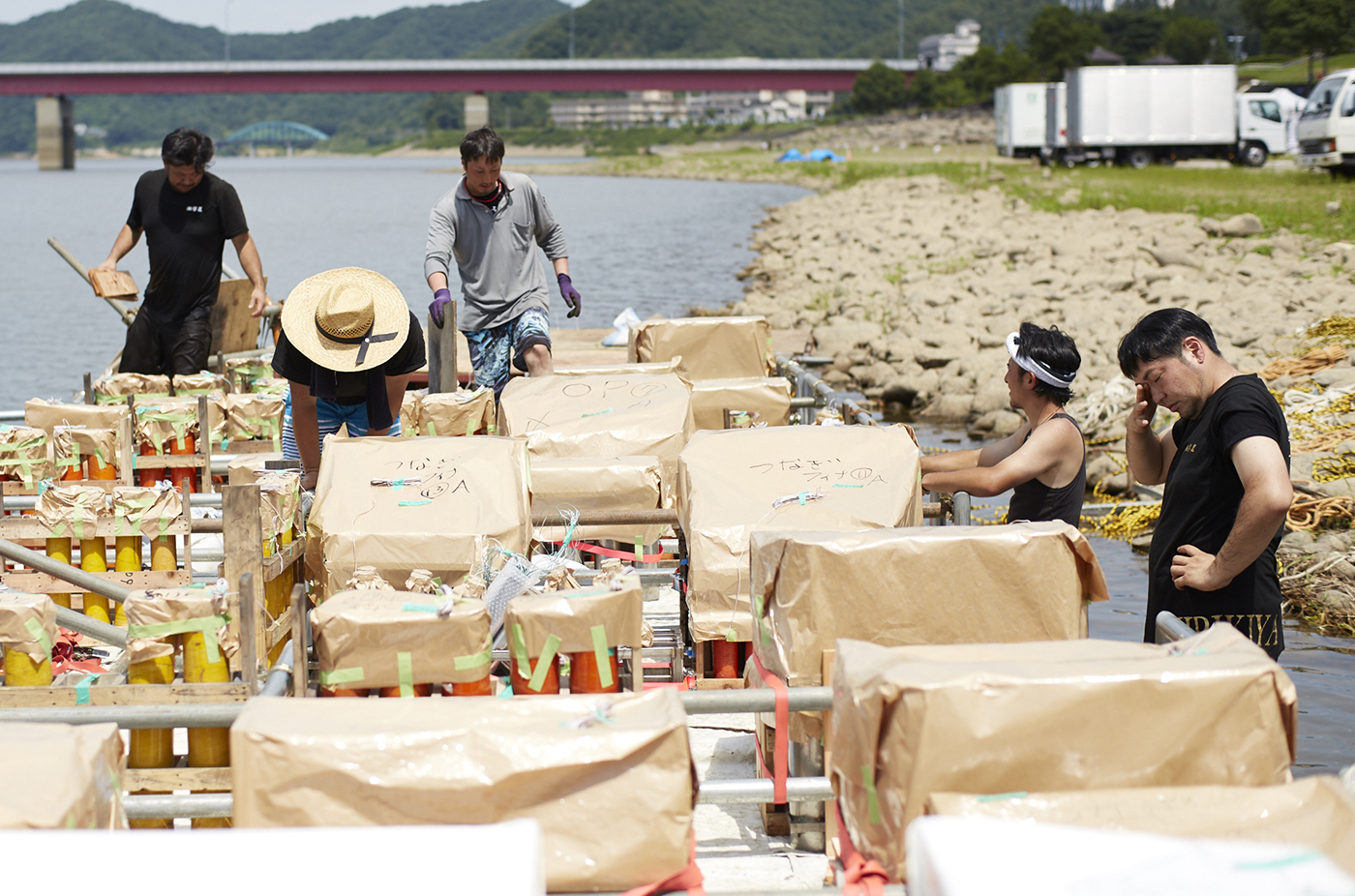
- Saito
- It’s been nearly 20 years since I last got together with my relatives at New Year and had a few drinks with them. Nowadays, there is also a New Year countdown in Sendai and Aomori…and various other places. As a company, our employees go to all the different places. We get back in the morning on January 1st, do our New Year visit to the shrine, and then finally get to put our feet up in the afternoon. That’s what it’s like.
- Yabuki
- So I guess while the audience enjoys the fireworks, the hanabi-shi are hard at work behind the scenes.
- Saito
- In summer, it can be just relentless. We might have three or four places all crammed in to one day. That can be really hard work. Ideally, I’d like to be able to do it all myself, but I can’t, so I get a bit edgy when I have to leave and let someone else take care of it.
- Yabuki
- When it’s like this, what do you like about your job? What’s your favorite part?
- Saito
- The best thing is taking the fireworks that we have made to an event, launching them and then hearing the cheers go up from the audience. That always gives me goosebumps. Even with something like the Omagari fireworks display, after the ‘Creative Fireworks’ category is finished, you can still hear the gasps of excitement from the audience’s seats!
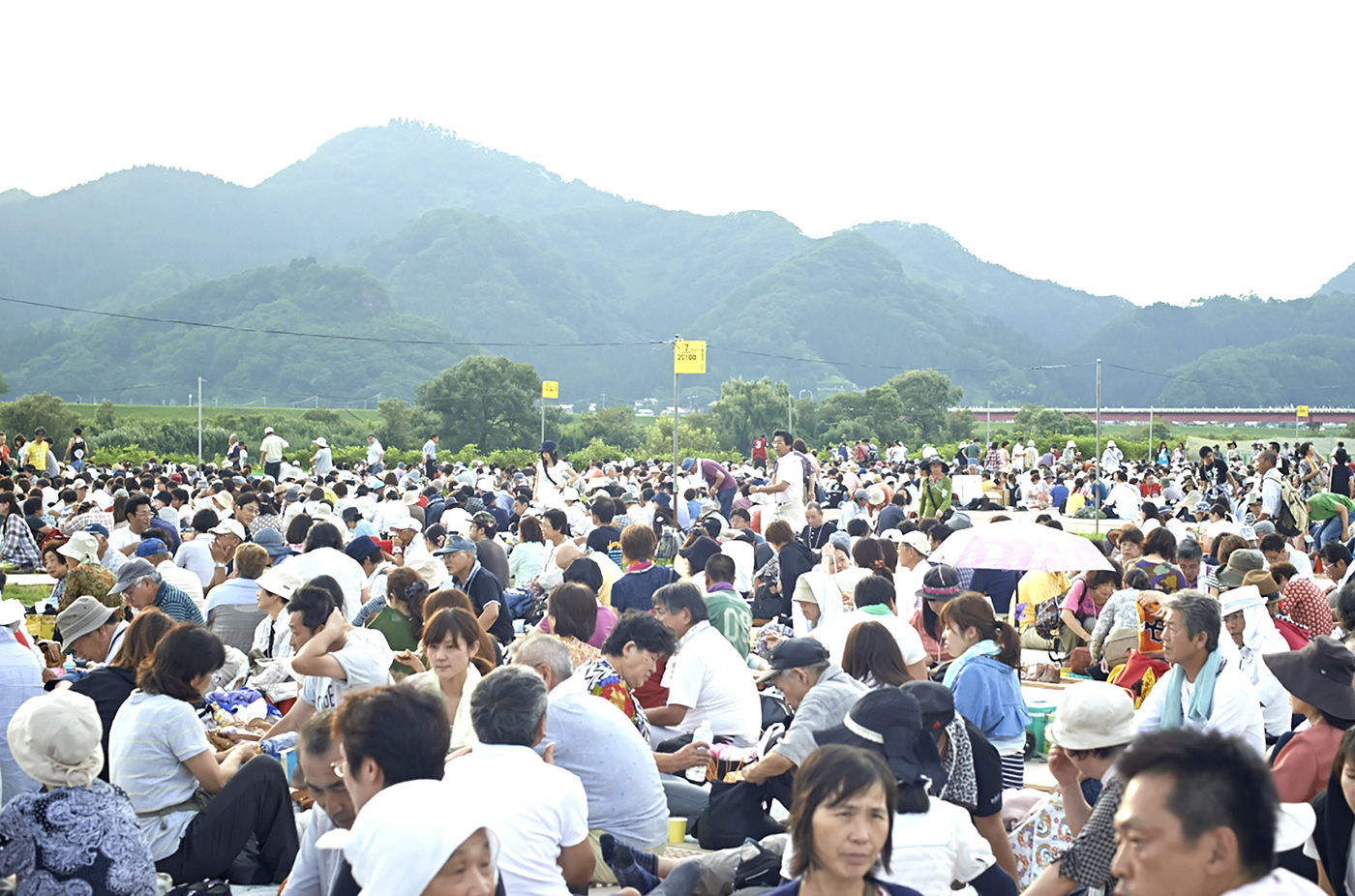
- Yabuki
- It’s as if the ground is rumbling, eh?
- Saito
- At that moment, I feel like I’m in a world of my own, and then I think, “Yes, I’ve done it!” I have no idea whether or not we’re going to win a prize. I don’t really care. I’m just pleased we’ve done it, if you know what I mean.
Even though a ‘hanabi-shi’ uses the latest technology, on location at the launch site it’s actually a very physically demanding challenge. Next time, we’ll pay a visit to a ‘hanabi-shi’ who is participating in the Omagari festival and hear his story.
